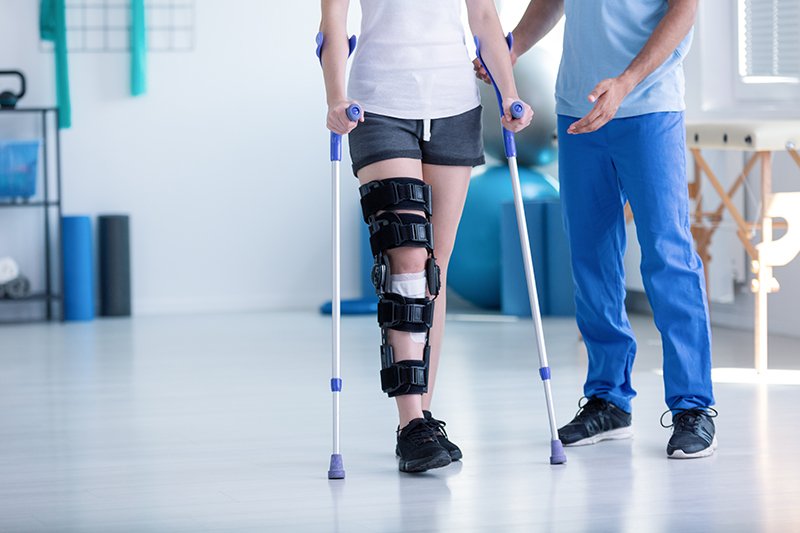Assistive devices such as canes, crutches, walkers provide advantages such as stability, augmentation of muscle action, and reduction of weight-bearing load. They are often prescribed if you break a bone in your leg or foot, have a procedure on your knee or lower leg, or suffer a stroke. Using crutches, a cane, or a walker can help keep your weight off your injured or weak leg, assist with balance, and enable you to perform your daily activities more safely.
Crutches
If your injury or surgery requires you to get around without putting any weight on your leg or foot, you may have to use crutches.
Canes
A cane can be helpful if you have minor problems with balance or stability, some weakness in your leg or trunk, an injury, or a pain.
If you are elderly, using a single point cane may help you to walk more comfortably and safely and, in some cases, may make it easier for you to continue living independently.
Walkers
If you have had total knee replacement or total hip replacement surgery, or you have another significant problem, you may need more help with balance and walking than you can get with crutches or a cane. A pickup walker with four legs will give you the most stability. A walker lets you keep all or some of your weight off of your lower body as you take steps. With a walker, you use your arms to support some of your body weight. As your strength and endurance get better, you may gradually be able to carry more weight in your legs.
When you are first learning to use your walking aid, you may wish to have a friend or family member nearby to help steady you and give you support. In the beginning, everything you do may seem more difficult. With just a few tips and a little practice, though, most people are able to quickly gain confidence and learn how to use a walking aid safely. Source: https://orthoinfo.aaos.org/









